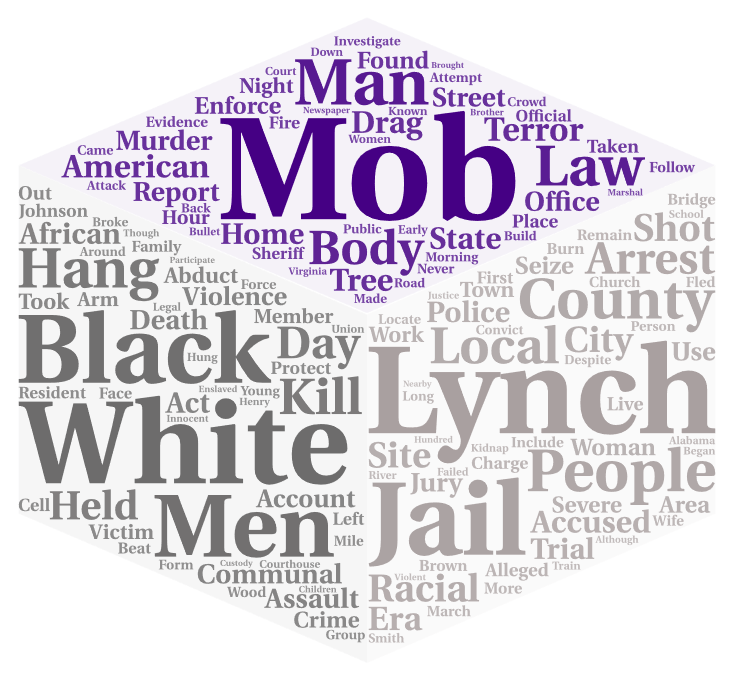“An event has happened upon which it is difficult to speak and impossible to remain silent.”
Edmund Burke

Keywords of Markers Inscriptions
Memorializing Racial Terror: Lynching Markers in the United States is a digital project that aims to catalog and map all the historical markers commemorating victims of lynching in the United States. This project intends to document recent efforts by activists, communities, organizations, and institutions to revive the collective memory of lynching and racial terror across the country. According to the Equal Justice Initiative (EJI), one of the most active organizations promoting the memorialization of lynching victims, “Historical markers are a compelling tool in the creation of a permanent record of racial terror violence that provides everyone in the community exposure to our shared history of racial injustice.”
What is lynching? Why should we memorialize racial terror events?
While there isn’t a single definition of lynching, most scholars of racial violence use the term to indicate episodes of extra-legal mob violence against a perceived threat to the community, often in the name of race, justice, or tradition. While lynching is commonly associated with racial terror killings against Black people in the Jim Crow South, the concept and practice of lynching first emerged in revolutionary Virginia, when Charles Lynch set up extra-legal ‘trials’ and punishments against alleged Loyalists and criminals. Later on, lynchings and summary executions of alleged outlaws frequently occurred in the West, as a form of frontier justice. However, it was after the end of Reconstruction that lynching became a pervasive form of state-sanctioned racial terrorism against Black communities, especially in the South. Until recently, racial terror lynchings had been expunged from collective and public memory, as well as school curricula and textbooks. Memorializing lynching victims is one way of addressing this collective amnesia about our past of racial violence and providing a better understanding of its legacy today. As Bryan Stevenson, the executive director of EJI, wrote: “The public narrative a nation creates about what is important is reflected in memorials and monuments. Who is honored, what is remembered, what is memorialized tells a story about a society that can’t be reflected in other ways.”
This site provides a constantly updated inventory of lynching markers that is fully searchable and downloadable, as well as maps and other tools to visualize the data. For each marker, you can read a short post that displays its characteristics, its text, and an image of the sign. You can start browsing individual markers here.
If you have any inquiries about this project, please contact Gianluca De Fazio (defazigx@jmu.edu).
